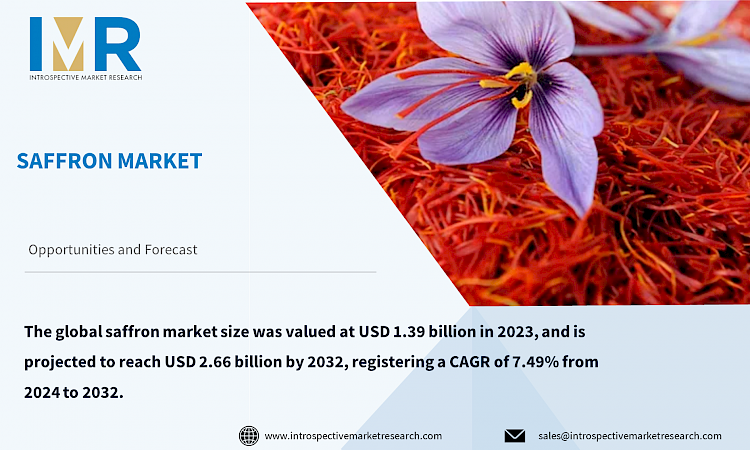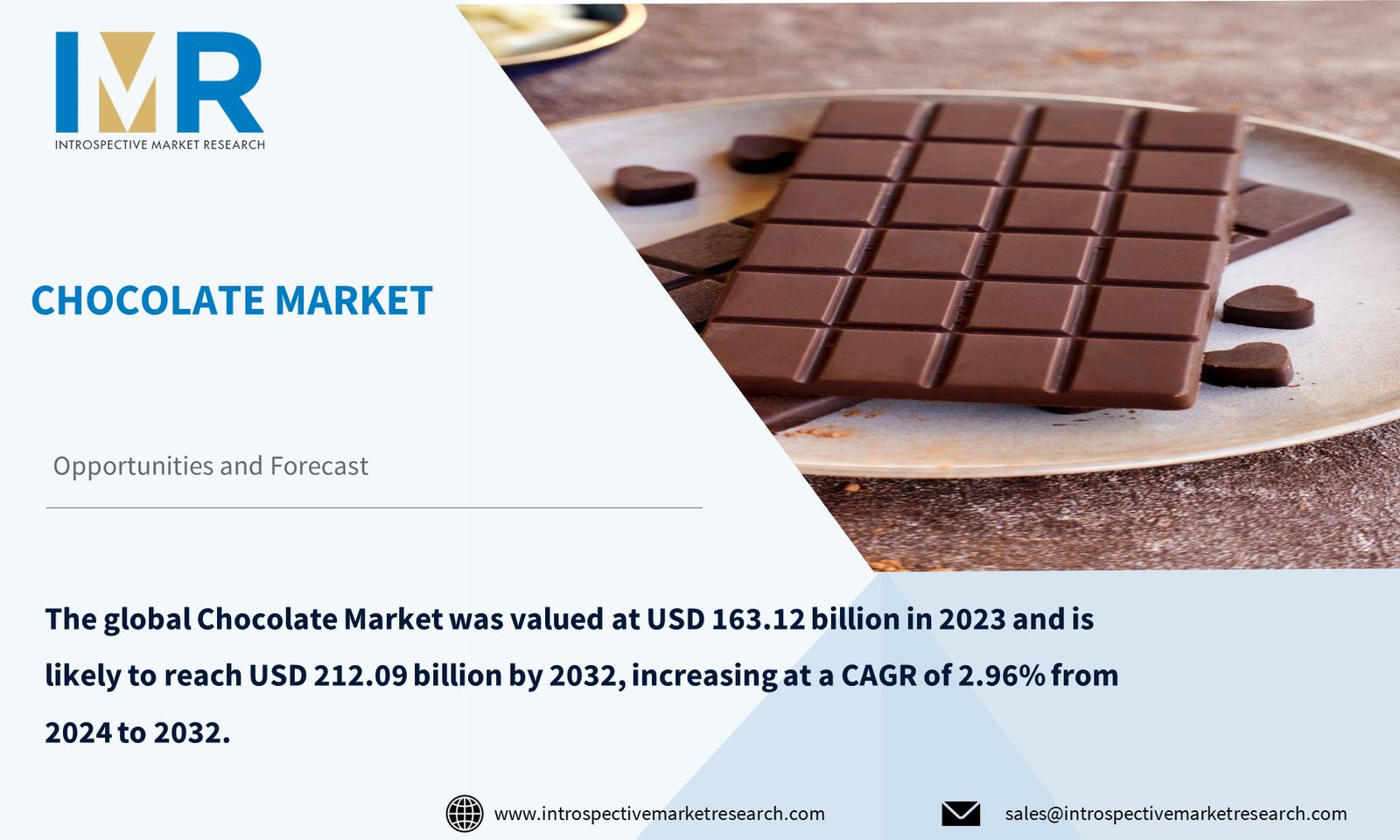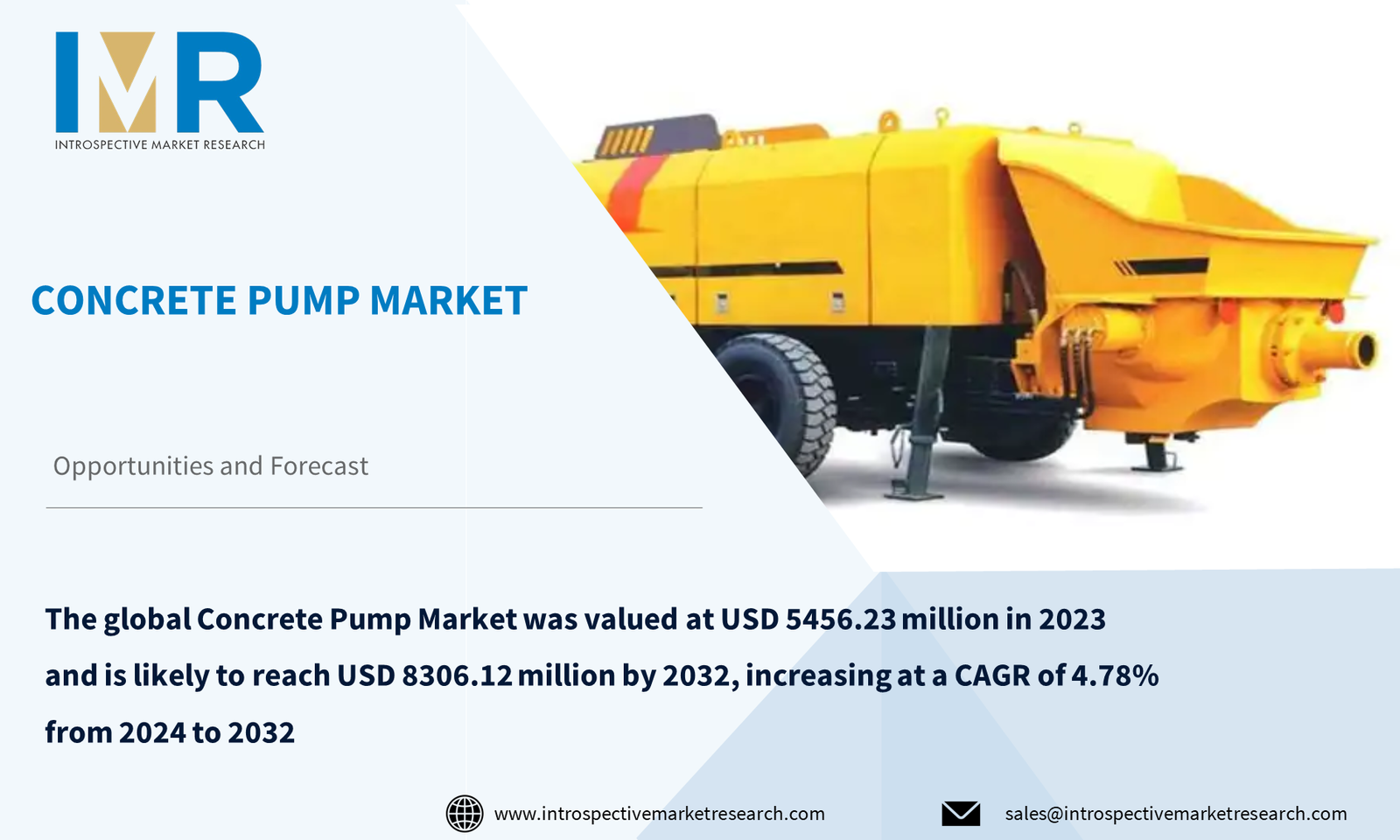
According to a new report published by Introspective Market Research, titled, “Saffron Market by Type, Application, Grade, Form, Distribution Channel, End-user and Region: Global Opportunity Analysis and Industry Forecast, 2024–2032,”
The global saffron market size was valued at USD 1.39 billion in 2023, and is projected to reach USD 2.66 billion by 2032, registering a CAGR of 7.49% from 2024 to 2032.
The saffron market in Global has witnessed substantial growth in recent years, driven by factors such as its increasing applications in culinary, pharmaceutical as well as in personal care industries due to its aroma, flavour, and medicinal properties. Major countries like Iran, India, and Afghanistan have seen a rise in saffron production and its applications in various industries.
The market expansion has been fuelled by the rising applicability of saffron in the pharmaceuticals and personal care industry along with the culinary application. Saffron’s medicinal properties contribute to the growth of the market. Saffron has antimicrobial, antibacterial, antifungal, antiseptic, and anti-inflammatory properties as well as a distinct flavour and aroma.
The increasing demand for eco-friendly and sustainable options for cosmetics, personal care, and the pharmaceutical industry. One of the key drivers is the increasing applications of saffron in the pharmaceutical industry. For example, saffron is being used for cancer treatment, skin treatment, neuropsychiatric and age-related disease treatment.
The increasing application of saffron brings the opportunity to adapt hydroponic and vertical farming techniques. This can help to improve saffron production with better control over factors like water, nutrients, and light. It is also beneficial to produce year-round production with minimized water usage, and soil-borne diseases. These techniques also help to produce saffron with better colour, taste, and aroma.
Global Saffron Market, Segmentation
The Saffron market is segmented based on Type, application, Grade, Form, Distribution Channel, End-user, and region.
Type:
Organic saffron is becoming increasingly popular due to the growing demand of consumers for natural and healthy food products. Organic saffron is a healthier and more environment-friendly choice for consumers which involves additional costs compared to conventional methods for careful attention to soil health, pest control, and harvesting techniques resulting in high prices. It is expensive due to its limited production helping to boost the market.
Certification bodies verify the entire production process, from cultivation to packaging, ensuring compliance with organic farming guidelines. This certification provides consumers with confidence in the authenticity and purity of organic saffron which leads to an increase in demand. The various factors such as rising government initiatives to promote organic farming, shifting consumer preferences towards healthy food, and increasing popularity of saffron in medical applications also contribute to the dominance of the organic segment in the market.
Grade:
In the Global saffron market, Grade I saffron is dominating. Grade I is the finest quality saffron in the world. It generated more than 60% of the total revenue in 2023. The reason behind the Grade I segment's dominance is due to the excellent colouring and flavouring strengths and aroma of its products. It consists of only the red stigmas of the saffron flower, which are carefully hand-picked and separated from the rest of the plant which ensures a higher level of purity in Grade I saffron along with no contaminants and adulterations.
Due to its top-notch characteristics, it is highly desirable for premium applications in food, fragrances, and personal care products. The rising trend of premium product consumption increases the demand for grade I saffron overall resulting in the growth of the segment.
Region:
The regional analysis of the Global saffron market highlights the dominance of the Asia Pacific region. In this region, countries like Iran, India, and Afghanistan majorly dominate the growth. The reasons behind this are the high production, consumption, export, purchasing power, and application rate of saffron. In many Asian countries, it is used in Ayurvedic medicine and other traditional healing systems. The region has seen a significant increase in online sales channels, with e-commerce platforms providing consumers easy access to a wide range of saffron products from around the world.
Some of The Active Market Players Are-
- Great American Spice (US)
- Mehr Saffron (US)
- Esfedan Trading Company (Iran)
- Tarvand Saffron Co. (Iran)
- Gohar Saffron (Iran)
- Rowhani Saffron Co. (Iran)
- Flora Saffron (Iran)
- Iran Saffron Company (Iran)
- Royal Saffron Company (India)
- Taj Agro Products (India)
- Jmd Agro Foods (India)
- King Kesariya (India)
- Grandor Co. (Iran)
- Upakarma (India)
- Everest Saffron (India)
- Waris Kesar Group (India)
- Abner Enterprises (India)
- Globalstar Company (India)
- Lion Saffron (India)
- House of Saffron (India)
- Dry Fruit Hub (India)
- Keynote (India)
- Baby Brand Saffron (India)
- Safran Global Company S.L.U. (Spain) and Other Active Players
Key Industry Developments
- In March 2023, the Indian Government announced that subsidies would be provided to saffron cultivating farmers for helping in saffron production. These subsidies would cover the cost of cultivation including the cost of seeds, and labor.
- In February 2023, Iran declared that it had exported 1000 tons of saffron in the previous year. This amount of saffron was a record-breaking amount exported by Iran.
- In 2023, Tata Consumer Products entered in Kashmiri Saffron segment with premium Grade I Saffron under its brand-named Himalayan.
Key Findings of the Study
- Global saffron market growth is driven by applications of saffron in various industries especially in pharmaceutical and personal care.
- The global saffron market offers opportunities for hydroponics and vertical gardening production techniques.
- Organic as well as grade I saffron dominate the market due to premium quality, aroma, flavour, applications, and medicinal properties.






